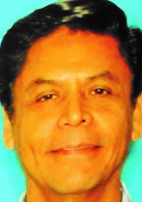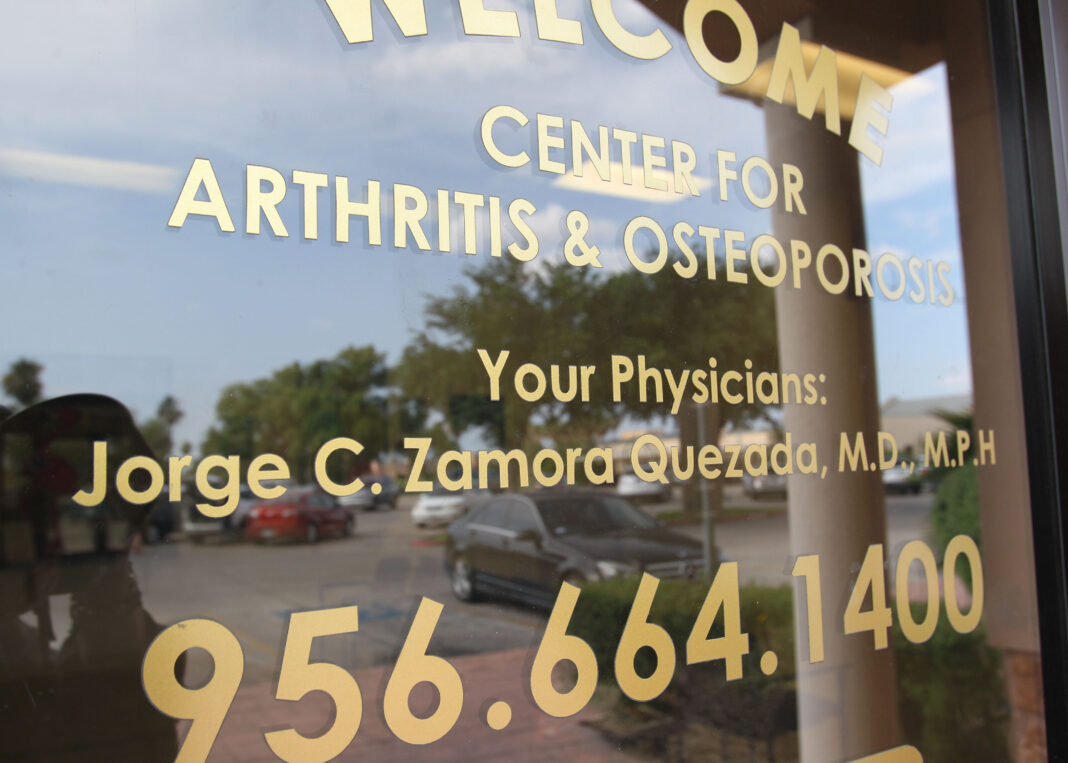|
Only have a minute? Listen instead
Getting your Trinity Audio player ready...
|

McALLEN — The sentencing of Dr. Jorge Zamora Quezada, who in 2020 was convicted of healthcare fraud, will have to wait several more months yet — until August, at the earliest.
The delay comes after Zamora Quezada’s defense attorneys failed to reach a consensus with prosecutors in McAllen federal court Wednesday over how many of the former doctor’s patients the judge should take into account when handing down his punishment.
That number is important because it will determine how the judge calculates the amount of prison time the former doctor should be sentenced to, as well as the so-called “loss amount,” or monetary losses, incurred by Zamora Quezada’s fraud.
On Jan. 15, 2020 — after a 25-day-long trial — a jury convicted Zamora Quezada of falsely diagnosing patients with rheumatoid arthritis and using those diagnoses to bill Medicaid and Medicare for unnecessary medications and treatments.
In some instances, Zamora Quezada administered chemotherapy to patients who did not need it.
The jury further found the former doctor guilty of attempting to obstruct an investigation into his schemes by submitting “falsified and fictitious” documents in response to grand jury subpoenas.
Specifically, the jury found Zamora Quezada guilty of fraudulent billing in relation to the treatment of seven distinct patients.
However, for the purposes of sentencing and restitution, the judge is allowed to consider any so-called “relevant conduct,” such as the existence of other patients who were also misdiagnosed by Zamora Quezada.
And therein lay a large portion of the dispute between federal prosecutors and Zamora Quezada’s defense team Wednesday.
The former doctor’s defense team disagreed with the number of patients prosecutors allege were affected by the scheme. But they also disagreed over which dollar amount the judge should consider when handing down a sentence — the amount billed to the insurance companies, or the amount those insurers actually paid out.
Both sides agreed that, regardless of what was billed, Medicaid and Medicare were likely to pay just 25% of the amount requested.
As for the number of patients who were impacted — in the aftermath of Zamora Quezada’s conviction, the government asked other potential victims to come forward and share their experiences.
Scores of people came forward to say they, too, had been misdiagnosed and unnecessarily treated
In charging documents, prosecutors said that Zamora Quezada had carried out the scheme for nearly two decades — from 2000 to 2018. In that time, he saw hundreds of thousands of patients.
The government estimates that Zamora Quezada may have intentionally misdiagnosed as many as 45% of his patients over that span of time.
That estimation caused the defense to balk. They repeatedly pushed back against the notion that the fraud was “so pervasive.”
“We believe that the government’s methodology is flawed,” said Stephen Chahn Lee, one of Zamora Quezada’s defense attorneys.
However, after reviewing the details of those who responded to the government’s solicitation for more victims to come forward, prosecutors narrowed the number to 100-200 people, according to Wednesday’s court discussions.
Those people were included in a pre-sentence report, a document that provides the court with information about the acts a defendant was convicted of, as well as any relevant conduct that was not specifically revealed in the trial.
The report, which is generated by the U.S. Probation Office, is also shared with the defense, who can raise objections to anything they disagree with.
And there, too, lay another dispute.
While Zamora Quezada’s defense team argued that the burden of proving which patients were misdiagnosed lies with the prosecution, the judge found the opposite to be true — that the onus is on the defense to prove which of the people mentioned in the pre-sentence report were properly diagnosed.
“You tell us who you think was diagnosed correctly,” U.S. District Judge Ricardo H. Hinojosa said.
At one point, the defense team tried to claim that the scheme netted only about $100,000 in ill-gotten gains. But Hinojosa scoffed at that.
“You want me to go to $100,000? That’s laughable. It isn’t very logical. It’s a very, very weak argument,” the judge said.
Instead, prosecutors say Zamora Quezada made tens of millions of dollars as a result of his fraud — money he used to fund a “lavish and opulent lifestyle,” according to the superseding indictment.
Zamora Quezada used the money for high-dollar purchases, including a “million dollar private jet,” a Maserati, a Porsche, and scores of properties in Texas, Colorado and Mexico.
Despite Wednesday’s protracted back and forth, the answers over how many patients Zamora Quezada misdiagnosed, or how much money the years-long scheme cost may, in the end, prove immaterial.
As Hinojosa repeatedly emphasized, those answers will have little effect over the former doctor’s prison sentence.
Zamora Quezada faces up to 10 years in federal prison for eight of the counts he was convicted of, and up to 20 years for the ninth count, the judge said.
And as to the “loss amount” — as prosecutors put it — the difference of opinion is between $144 million and $179 million.
“From the guidelines, it isn’t much of a difference,” Hinojosa said, referring to the Federal Sentencing Guidelines which outline the range of prison time he may consider when handing down Zamora Quezada’s sentence.
“A jury found that your client was diagnosing people with a disease they did not have. Almost all his patients were diagnosed with rheumatoid arthritis,” Hinojosa said, adding that people inherently trust their doctors.
“The fact that there was fraud? Yes, there was fraud,” he said, adding that the jury did not err in convicting Zamora Quezada.





